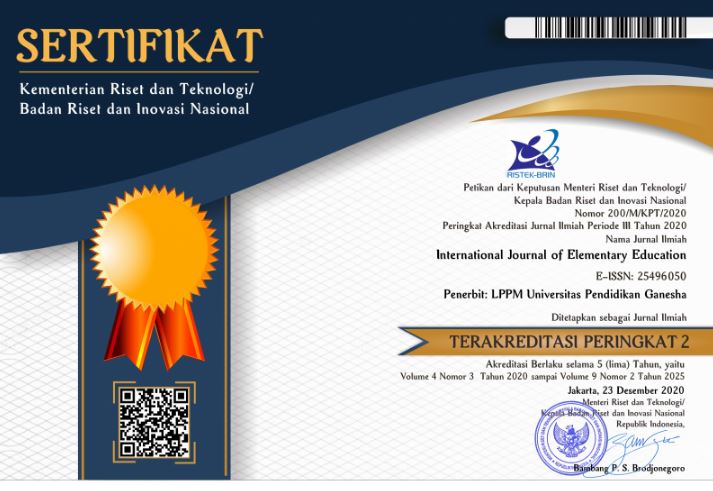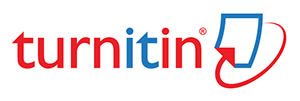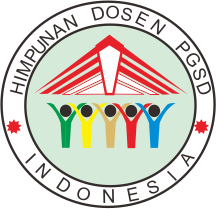Improving Reading Skills and Engagement in Pancasila Education Using QR-Code-Assisted Snowball Throwing Method
DOI:
https://doi.org/10.23887/ijee.v8i3.77968Keywords:
Snowball Throwing, PBL, QR-Code, Reading Ability, Interest in ReadingAbstract
The selection of inappropriate and uncreative teaching tools can reduce students' interest in reading, leading to difficulties in understanding material in Pancasila Education. This study aims to analyze the effectiveness and differences of the Snowball Throwing method assisted by QR-Code within the Problem-Based Learning model in improving elementary students' reading skills and interest. This research adopts a quantitative approach using a quasi-experimental design, specifically a Non-Equivalent Control Group Design. The study sample comprised 43 fifth-grade students, with 22 students in the experimental group and 21 students in the control group. Data were collected through interviews, observations, tests (pretest and posttest), and questionnaires. Data analysis included normality and homogeneity tests as prerequisites, as well as Independent t-test and N-Gain tests to test the hypotheses. The findings reveal that the Snowball Throwing method assisted by QR-Code within the Problem-Based Learning model is effective in improving students' reading skills and interest. Furthermore, there is a significant difference between this method and conventional teaching methods, with the innovative model demonstrating better outcomes in Pancasila Education learning. In conclusion, this method offers a creative alternative to enhance the quality of education in elementary schools.
References
Agustin, E. M., Kamidjan, & Asmarani, R. (2019). Pembelajaran Membaca Pemahaman Menggunakan Metode Snowball Throwing Pada Siswa Kelas V Sekolah Dasar. Wacana Didaktika, 7(01), 46–57. https://doi.org/10.31102/wacanadidaktika.7.01.46-57.
Aini, Q., Rahardja, U., Tangkaw, M. R., Santoso, N. P. L., & Khoirunisa, A. (2020). Embedding a Blockchain Technology Pattern Into the QR Code for an Authentication Certificate. Jurnal Online Informatika, 5(2), 239. https://doi.org/10.15575/join.v5i2.583.
Aisyah, S., Anwar, M., & Susiawati. (2021). Keefektifan Model Pembelajaran Kooperatif Tipe Snowball Throwing Dalam Keterampilan Membaca Bahasa Arab Siswa Kelas X Ma Putri Ddi Mangkoso Kab. Barru. Al-Fashahah: Journal Of Arabic Education, Linguistics, And Literature, 1(1), 82–92. https://doi.org/10.59562/al-fashahah.v1i1.16386.
Amaliah, F., Maedeamin, R., & Baso, B. S. (2023). Pengaruh Model Pembelajaran Snowball Throwing Terhadap Hasil Belajar Membaca pada Mata Pelajaran Bahasa Indonesia Siswa Kelas IV SD No. 198 Inpres Bontorita Kabupaten Takalar. Inspirasi Dunia: Jurnal Riset Pendidikan Dan Bahasa, 2(2), 95–117. https://doi.org/10.58192/insdun.v2i2.762.
Amir, A. (2023). Analisis Faktor-Faktor Penyebab Rendahnya Minat Baca Siswa di Daerah Terpencil Terdepan dan Tertinggal. Empiricism Journal, 4(1), 296–301.
https://doi.org/10.36312/ej.v4i1.1239.
Anjani, S., Dantes, N., & Artawan, G. (2019). Pengaruh Implementasi Gerakan Literasi Sekolah Terhadap Minat Baca dan Kemampuan Membaca Pemahaman Siswa Kelas V SD Gugus II Kuta Utara. Pendasi: Jurnal Pendidikan Dasar Indonesia, 3(2), 74–83. https://doi.org/10.23887/jpdi.v3i2.2869.
Apriliana, N. (2021). The Problem of Online Learning in Islamic Primary School in Yogyakarta. Indonesian Journal of Islamic Education Studies (IJIES), 4(1), 1–16. https://doi.org/10.33367/ijies.v4i1.1593.
Ariyani, L., Mulyono, D., & Febriandi, R. (2021). Pengembangan Student Worksheet Berbasis Kearifan Lokal Berbantuan Qr-Code pada Pembelajaran Tematik Kelas V. Journal of Education and Instruction (JOEAI), 4(2), 410–418. https://doi.org/10.31539/joeai.v4i2.2811.
Arum Setiowati, K., Karmila, M., & Suyitno, D. (2018). Keefektifan Model Numbered Heads Together Terhadap Pemahaman Hasil Membaca Siswa Kelas Iv Sd Negeri Sepakung 03 Kecamatan Banyubiru. Jurnal Sekolah (JS), 2(2), 23–31. https://doi.org/10.24114/js.v2i2.9509.
Bera, L. (2020). Pengaruh Model Snowball Throwing Terhadap Hasil Belajar (Siswa Kelas V Pada Mata Pelajaran PKn di SD Inpres XX Solot). Equilibrium: Jurnal Penelitian Pendidikan Dan Ekonomi, 17(02), 61–68. https://doi.org/10.25134/equi.v17i02.
Branch, R. M. (2010). Instructional design: The ADDIE approach. In Instructional Design: The ADDIE Approach. https://doi.org/10.1007/978-0-387-09506-6.
Fajrianti, & Hutami, L. T. (2022). Upaya Meningkatkan Keaktifan Siswa Kelas IV Pembelajaran PKn MI Raudhotul Mubtadiin Kaliwadas Menggunakan Metode Snowball Throwing Efforts to Increase the Activeness of Class IV Students Learning Civics MI Raudhotul Mubtadiin Kaliwadas Using the Snowball . ARJI: Action Research Journal Indonesia, 4(2), 141–149. https://doi.org/10.61227.
Fierna, J. L. P. M., Putriani, F., Santika, H., Nadhif, M. K., & Grashella, A. P. . (2023). Peran Pendidikan Pancasila Dalam Membentuk Karakter Peserta Didik di Sekolah. Jurnal Kewarganegaraan, 7(2), 1983–1988. https://doi.org/10.31316/jk.v7i2.5576.
Gani, S. A., Yusuf, Y. Q., & Erwina, R. (2017). The Effectiveness Of Snowball Throwing Technique In Teaching Reading Comprehension. Proceedings of The 1st National Conference on Teachers’ Professional Development, 18–28. https://www.researchgate.net/publication/320371809.
Ginting, D., Manik, S., Sinambela, E., & Pasaribu, A. N. (2021). The Effect of Using Snowball Throwing Method and SQ4R Method for Students’ Reading Comprehension Skill at SMA Negeri 1 Kuala Stabat. Article in Budapest International Research and Critics Institute (BIRCI-Journal) Humanities and Social Sciences, 4(4), 10990–10997. https://doi.org/10.33258/birci.v4i4.3155.
Halean, S., Kandowangko, N., & Goni, S. Y. V. I. (2021). Peranan Pendidikan Dalam Meningkatkan Sumber Daya Manusia Di SMA Negeri 1 Tampan Amma. HOLISTIK, Journal of Social and Culture, 14(2), 1–15. https://ejournal.unsrat.ac.id/v3/index.php/holistik/article/view/33774.
Halili, S. H. (2019). Technological Advancements in Education 4.0. The Online Journal of Distance Education and E-Learning, 7(1), 63–69. https://tojdel.net/journals/tojdel/volumes/tojdel-volume07-i01.pdf#page=70.
Hisbullah, & Firman. (2018). Penerapan Model Pembelajaran Snowball Throwing Dalam Meningkatkan Hasil Belajar Ilmu Pengetahuan Alam Di Sekolah Dasar. CJPE: Cokroaminoto Juornal of Primary Education, 2(2), 100–113. https://e-journal.my.id/cjpe.
İçinde, G. T. (2022). QR Code Expert. Süleyman Sönmez.
Irma Sari, E., Wiarsih, C., & Bramasta, D. (2021). Strategi Guru Dalam Meningkatkan Keterampilan Membaca Pemahaman Pada Peserta Didik di Kelas IV Sekolah Dasar. Jurnal Educatio FKIP UNMA, 7(1), 74–82. https://doi.org/10.31949/educatio.v7i1.847.
Islamiati, A. D., Dollah, S., & Sakkir, G. (2024). The Use Of The Snowball Throwing Technique In Teaching Reading Skill Penggunaan Teknik Snowball Throwing Dalam Pengajaran Keterampilan Membaca Bahasa Inggris. Jurnal Indopedia, 2(1), 196–206.
https://indopediajurnal.my.id/index.php/jurnal/article/view/248/179.
Iswara, M., Ratnaningsih, A., & Suyoto. (2023). Penerapan Model Snowball Throwing Untuk Meningkatkan Keaktifan Dan Hasil Belajar Siswa Pada Mata Pelajaran Pkn Kelas IV SDN Kedungpucang TA 2020/2021. Jurnal Pendidikan Dasar, 4(2), 2746–1211. http://jurnal.umpwr.ac.id/index.php/jpd.
Juwandi, D. (2020). Pembelajaran Membaca Dengan Model Snowball Throwing Untuk Meningkatkan Kemampuan Membaca Pemahaman (Penelitian Tindakan Kelas Siswa Kelas VIIIB SMPN 7 Cimahi). Apollo Project: Jurnal Ilmiah Program Studi Sastra Inggris, 9(2), 1–14.
https://doi.org/10.34010/apollo.v9i2.3955.
Kholifah, W. T., & Kristin, F. (2021). Pengembangan Bahan Ajar Cerita Bergambar Tematik Untuk Meningkatkan Minat Baca Siswa Sekolah Dasar. Jurnal Basicedu, 5(5), 3061–3072. https://doi.org/10.31004/basicedu.v5i5.1256.
Lestari, S. O., & Kurnia, H. (2022). Peran Pendidikan Pancasila dalam pembentukan karakter. Jurnal Citizenship: Media Publikasi Pendidikan Pancasila Dan Kewarganegaraan, 5(1), 25. https://doi.org/10.12928/citizenship.v5i2.23179.
Majid, R. A., Apriliya, S., & Suryana, Y. (2021). Media Pembelajaran Quick Response Code (QR Code) Berbasis Kartu Puisi di Kelas IV Sekolah Dasar. Pedadidaktika: Jurnal Ilmiah Pendidikan Guru Sekolah Dasar, 8(2), 529–549. https://doi.org/10.17509/pedadidaktika.v8i2.36314.
Martati, B., Mirnawati, L. B., & Firmannandya, A. (n.d.). Analisis Penerapan Model Pembelajaran Problem Based Learning Dalam Mata Pelajaran Pendidikan Pancasila Sekolah Dasar. In Proceding Confrence Of Elementary Studies (pp. 127–133). https://journal.um-surabaya.ac.id/Pro/article/view/19721.
Meliyawati. (2016). Pemahaman Dasar Membaca. Deepublish.
Muslita, L., & Gani, S. A. (2022). The Impact of Using Snowball Throwing Technique in Improving Students’ Reading Comprehension. Research in English and Education (READ), 7(1), 13–23.
https://jim.usk.ac.id/READ/article/view/19724/9096.
Nasir, R., Samsuri, A. S., & Syafruddin. (2021). Membaca Pemahaman Dengan Menggunakan Model Pembelajaran Kooperatif Snowball Throwing. Jurnal Pendidikan : Riset Dan Konseptual, 5(1), 142. https://doi.org/10.28926/riset_konseptual.v5i1.327.
Nasution, T., & Simanjuntak, W. (2023). The Use of Snowball Throwing Learning Model to Improve Students’ Civics Learning Outcomes in the Topic of “The Freedom to Join Organizations. Jurnal Basicedu, 7(1), 151–157. https://doi.org/10.31004/basicedu.v7i1.4344.
Noermanzah. (2020). Model-Model Pembelajaran Membaca sebagai Inovasi dalam Mengembangkan Bahan Ajar Membaca. Seminar Nasional MLI Cabang Universitas Bengkulu, 176–190.
https://doi.org/10.31219/osf.io/hpq2d.
Noordzij, G., & Wijnia, L. (2020). The Role of Perceived Quality of Problems in the Association Between Achievement Goals and Motivation in Problem-based Learning. Interdisciplinary Journal of Problem-Based Learning, 14(1), 1–18. https://doi.org/10.14434/ijpbl.v14i1.28593.
Nurohmah, A. N., & Dewi, D. A. (2021). Penanaman Nilai Moral dan Karakter di Era Pandemi melalui Pendidikan dengan Mengimplementasikan Nilai-Nilai Pancasila. Journal of Education, 3(1), 119–128. https://doi.org/10.31004/aulad.v4i3.191.
Nurul Huda, D., & Saputra, D. S. (2023). Model Problem Based Learning Sebagai Upaya Peningkatan Kemampuan Membaca Pemahaman Siswa SD di Majalengka. Buletin Ilmiah Pendidikan, 2(2), 179–189. https://doi.org/10.56916/bip.v2i2.515.
Palupi, D. A. R., Putri, K. E., & Mukmin, B. A. (2022). Pengembangan E-book menggunakan Aplikasi BookCreator berbasis QR Code pada Materi Ajar Siswa Sekolah Dasar. PTK: Jurnal Tindakan Kelas, 3(1), 78–90. https://doi.org/10.53624/ptk.v3i1.123.
Pramita Dewi, R., Gde Margunayasa, I., & Made Suarjana, I. (2021). Belajar Bahasa Indonesia Dengan Model Pembelajaran Snowball Throwing Berbantuan Media Audio Visual. Mimbar PGSD Undiksha, 9(3), 424–431. https://doi.org/10.23887/jjpgsd.v9i3.40090.
Prastiwi, S. D., & Khosiyono, B. H. C. (2023). Analisis Pembelajaran Pendidikan Pancasila Menggunakan Lkpd Berbasis Proyek Pada Peserta Didik SD. Pendas : Jurnal Ilmiah Pendidikan Dasar, 8(3), 1812–1819. https://doi.org/10.23969/jp.v8i3.10993.
Purba, H. M., Zainuri, H. S., Syafitri, N., & Ramadhani, R. (2023). Aspek-Aspek Membaca Dan Pengembangan Dalam Keterampilan Membaca Di Kelas Tinggi. 2(3). https://doi.org/10.58192/insdun.v2i3. .
Purwanti, A., Putri Pratiwi, C., & Sartini. (2023). Peningkatan Kemampuan Membaca Lancar melalui Model PBL berbantu Media APE pada Siswa Kelas 1. Journal of Education Research, 4(3), 1222–1230. https://doi.org/10.37985/jer.v4i3.280.
Radhiyah, I. (2021). Memahami Karya Ilmiah Melalui Penerapan Keterampilan Membaca Sekilas Dan Kritis. Cross-Border, 4(2), 606–622.
https://journal.iaisambas.ac.id/index.php/Cross-Border/article/view/959/768.
Rahayu Ningtyas, K., Setyo Retno, R., & Trijono, P. (2023). Meningkatkan Minat Baca Melalui Model Pembelajaran PBL (Problem Based Learning) Dengan Pemanfaatan Pojok Baca Kelas Pada Siswa Kelas VI SDN Wonokerto Kabupaten Kediri. Pendas : Jurnal Ilmiah Pendidikan Dasar, 8(2), 1630–1643. https://doi.org/10.23969/jp.v8i2.9714.
Rahayu, R., Ulya, H., . K., . I., & Kurniasih, N. (2018). Collaborative Assessment Using QR-Code on Ethno-mathematics Learning for Pre-Service Teacher. International Journal of Engineering & Technology, 7(2.13), 413. https://doi.org/10.14419/ijet.v7i2.13.16934.
Rillero, P., Koerner, M., Jimenez-Silva, M., Merritt, J., & Farr, W. J. (2017). Developing Teacher Competencies for Problem-Based Learning Pedagogy and for Supporting Learning in Language-Minority Students. Interdisciplinary Journal of Problem-Based Learning, 11(2), 1–13.
https://doi.org/10.7771/1541-5015.1675.
Rosada, N., Yansa, G. P., & Ngazizah, N. (2021). Peningkatan Hasil Belajar dan Keaktifan Siswa Melalui Model Snowball Throwing Kelas V SDN 2 Winong. Jurnal Litbang Edusaintech, 2(2), 141–148. https://doi.org/10.51402/jle.v2i2.59.
Sabela Fitria Khamsa, S. (2020). Penerapan Model Pembelajaran Based Learning Kombinasi Snowball Throwing Berbasis E-Learning untuk Meningkatkan Kemampuan Berpikir Kreatif Peserta Didik SMK (Vol. 6, Issue 3). UNS. https://jurnal.uns.ac.id/tata/article/view/59112/34517.
Sari, P. M., & Aprilia, N. (2023). Upaya Peningkatan Keterampilan Membaca Melalui Model Problem Based Learning (Pbl) Berbantu Media Flash Card Pada Sekolah Dasar Kelas 1a Muhamadiyah Pakel. STRATEGY: Jurnal Inovasi Strategi Dan Model Pembelajaran, 3(1), 105–112.
https://doi.org/10.51878/strategi.v3i1.2006
Savitri, E. N., Amalia, A. V, Prabowo, S. A., Rahmadani, O. E. P., & Kholidah, A. (2021). The Effectiveness of Real Science Mask With QR Code On Student’s Problem-Solving Skills and Scientific Literacy. Jurnal Pendidikan IPA Indonesia, 10(2), 209–219. https://doi.org/10.15294/jpii.v10i2.29918
Sumarni, K., H., & Hairuddin. (2021). Implementasi Model Pbl Untuk Meningkatkan Keterampilan Membaca Siswa Kelas V UPT SD Negeri 106 Pinrang. Pinisi: Journal of Teacher Professional, 3(3), 662–665. https://doi.org/10.26858.
Susilowati, M., Z., & Suratinah. (2022). Efektivitas Model Problem Based Learning Bernuansa Budaya Lokal dalam Meningkatkan Kemampuan Membaca Pemahaman Siswa Kelas III SD. Jurnal Profesi Keguruan, 8(2), 185–192. https://journal.unnes.ac.id/nju/index.php/jpk.
Trio Nugroho, N., Siswantoro, & Darsono. (2018). Pengaruh Pembelajaran Kooperatif Tipe Snowball Throwing terhadap Hasil Belajar PKn. Pedagogi: Jurnal Pendidikan Dasar, 6(9), 3–13.
https://dx.doi.org/10.23960%2Fpedagogi.v6i9.16217.
Virdinarti, P. L., & Aries, N. R. (2022). Pengaruh Problem Based Learning Berbasis Kontekstual Menggunakan Qr Code Terhadap Kemampuan Pemecahan Masalah. JSSA : Journal Of Smart Society Adpertisi, 1(1), 34–37. https://jurnal.adpertisi.or.id/index.php/jssa.
Widagdo, P., & Vidya, A. (2023). Membangun Sekolah Berbasis QR Code. Ananta Vidya.
Widyasari, W., Sutopo, H., & Agustian, M. (2019). QR Code-based Learning Development: Accessing Math Game for Children Learning Enhancement. International Journal of Interactive Mobile Technologies, 13(11), 111–124. https://doi.org/10.3991/ijim.v13i11.10976.
Yulia, A. Z., & Rafni, A. (2019). Minat Baca Siswa dalam Pembelajaran PPKn (Studi pada Kelas VII di SMP N 4 Kota Solok. Journal of Civic Education, 2(3), 206–210.
Zalik, & Saidi, Mahmuda, I. A. (2020). Character Education in the New Paradigm of Pancasila Citizenship Education. Journal of Educational Research, 8(12), 6893–6901.
https://doi.org/10.13189/ujer.2020.081255.
Zelpamailiani. (2020). Upaya Meningkatkan Minat Baca Siswa Sekolah Dasar Gugus IV Di Kecamatan Koto XI Tarusan. Workshop Inovasi Pembelajaran Di Sekolah Dasar, 3(4), 1316–1322.
https://jurnal.uns.ac.id/shes.
Zidan, M. (2023). Inovasi Model, Strategi Atau Metode Pembelajaran Di Era 4.0 Yang Serba Digital. Prosiding Conference of Elementary Studies (CES, 495–500.
Downloads
Published
How to Cite
Issue
Section
License
Copyright (c) 2024 Salsa Sayyidatul Ummah, Kurotul Aeni

This work is licensed under a Creative Commons Attribution-ShareAlike 4.0 International License.
Authors who publish with the International Journal of Elementary Education agree to the following terms:
- Authors retain copyright and grant the journal the right of first publication with the work simultaneously licensed under a Creative Commons Attribution License (CC BY-SA 4.0) that allows others to share the work with an acknowledgment of the work's authorship and initial publication in this journal.
- Authors are able to enter into separate, additional contractual arrangements for the non-exclusive distribution of the journal's published version of the work (e.g., post it to an institutional repository or publish it in a book), with an acknowledgment of its initial publication in this journal.
- Authors are permitted and encouraged to post their work online (e.g., in institutional repositories or on their website) prior to and during the submission process, as it can lead to productive exchanges, as well as earlier and greater citation of published work. (See The Effect of Open Access)








